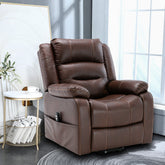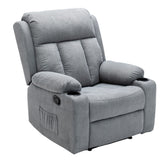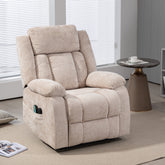Space-Efficient Elegance: Furnishing Tips for Modern South African Houses
Why Maximizing Space is Key in South African Household Design
Understanding the Unique Spatial Challenges in South Africa
South Africa faces unique housing challenges in its urban areas. Cities are growing fast, making living spaces smaller. Many families struggle to find homes that are both affordable and roomy. This is a big issue in cities like Johannesburg and Cape Town. Land is scarce and expensive in these areas. As a result, people are living in smaller homes. They need to use every bit of space wisely. This has led to a rise in clever space-saving ideas. Designers and homeowners are finding new ways to make small spaces work better. They're turning tiny areas into cozy, functional homes. The goal is to live well, even in less space. Space-saving dining solutions, like folding dining chairs, are becoming essential in these compact homes.

The Importance of Efficient Space Management
Using space well is crucial in South African homes. It helps families live comfortably in smaller areas. Good planning can make a home feel bigger and more organized. It cuts down on clutter and makes rooms feel open. This is important for feeling good in small spaces. Well-designed layouts also make daily life easier. They can even make a home worth more by using all the space well. This matters in South Africa's tough housing market. Smart space use is also good for the planet. It uses less energy and creates less waste. These benefits show why managing space matters in modern South African homes. Efficient dining areas with folding chairs play a key role in this space management.
Top Space-Saving Features of Modern South African Homes
Integrating Multi-Level Storage Solutions
Multi-level storage is a big help in small South African homes. It uses height to save floor space. Tall shelves that go up to the ceiling are popular. They store a lot without taking up much room. Loft beds with storage below work great in kids' rooms. They create play or study areas under the bed. Stairs with drawers built in make use of wasted space. In dining areas, wall-mounted shelves can store folding chairs when not in use. These ideas help keep homes neat, even in tight spaces. They show how thinking up instead of out can solve storage problems. Many homes now have custom storage units that fit perfectly in odd spaces.

Utilizing Underutilized Spaces
South African homeowners are getting creative with unused spaces. Hidden storage is key to using every corner. Under-stair storage is trendy and great for shoes or seasonal items. Wall-mounted folding tables paired with folding dining chairs save floor space. They can be folded away after meals to free up room. Hollow ottomans work as both seats and storage boxes. Bed frames with drawers use space that's often wasted. Even the area above doors is being used for shelves. These smart ideas help maximize storage without losing living space. They turn overlooked spots into useful areas. Folding dining chairs fit well into these clever storage solutions.
Incorporating Smart Technology for Space Optimization
Smart tech is changing how South Africans use space at home. Compact machines and devices help save room. Smart storage systems can help organize folding chairs and other items efficiently. Robotic vacuum cleaners eliminate bulky cleaning gear. Voice-controlled lights and thermostats reduce wall clutter. Foldable TVs can be stored away when not in use. Smart home hubs control everything from one spot, saving space. In dining areas, app-controlled extendable tables pair well with folding chairs. These tech solutions help South Africans make small spaces work harder. They add function without taking up more room.
Real-World Applications: Space-Saving Success Stories from South Africa
How Compact Designs are Changing the Game in Urban Areas
Compact designs are reshaping city living in South Africa. In Cape Town, architects are creating homes that feel big despite being small. One success story is a 40m² flat that feels much larger. The designer used multi-use furniture and clever storage. A dining table folds out from the wall, paired with stylish folding chairs. The kitchen island doubles as a desk and dining table when needed. In Johannesburg, tiny houses are gaining popularity. These homes, often under 37m², use every inch wisely. They show that comfortable living is possible in small spaces. Folding dining chairs are a key feature in these tiny homes, offering flexible seating options.

Case Studies: Transforming Small Spaces into Versatile Spaces
Several examples show how small spaces in South Africa can be transformed. In Durban, a 50m² flat became a flexible living area. The owners used sliding walls to create separate rooms when needed. When open, the space feels large and airy. A set of folding dining chairs allows for dinner parties without cluttering the space. In Pretoria, a narrow townhouse added a custom-built loft. This created an extra bedroom without expanding the building. The dining area uses a drop-leaf table with folding chairs stored on wall hooks. A Cape Town studio used a raised platform to separate living and sleeping areas. These cases show how creative design can make small spaces highly functional.
The Role of Professional Design Services in Space Management
Professional designers play a big role in South African space management. They bring expert knowledge on maximizing small areas. They know local building rules and can suggest the best layouts. Many South African homeowners are seeking their help. Designers can create custom storage that fits perfectly in a home. They often recommend space-saving furniture like folding dining chairs and expandable tables. They also know how to use color and light to make spaces feel bigger. In Bloemfontein, one firm specializes in tiny home conversions. They've helped many families downsize without losing comfort. These services are becoming essential as South African homes get smaller. They help turn challenging spaces into beautiful, functional homes that meet modern needs.






Leave a comment
All blog comments are checked prior to publishing